Persistent carpet stains can feel like a never-ending cycle. You clean it, it vanishes, and then days or weeks later, the same blemish resurfaces. This common issue frustrates homeowners across the country, especially when it comes to high-traffic areas or homes with kids and pets. But why does it happen, and more importantly, how can you fix it for good?
This comprehensive guide will walk you through everything you need to know about recurring carpet stains, from causes to deep-cleaning solutions and preventive steps.
What Causes Carpet Stains to Reappear?
Wicking Effect
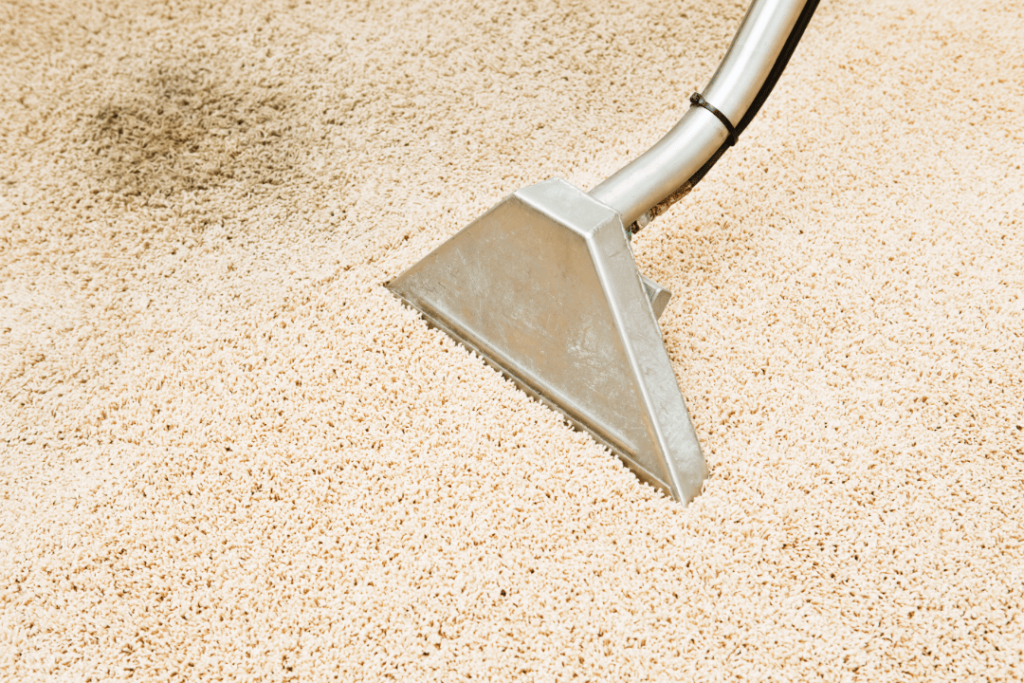
The most common culprit behind recurring carpet stains is the wicking effect. When a liquid spill penetrates deeply into the carpet pad or backing, cleaning only the surface doesn’t remove the underlying contamination. As the carpet dries, the moisture from deep inside begins to evaporate, pulling the stain back up to the surface.
Residue Buildup
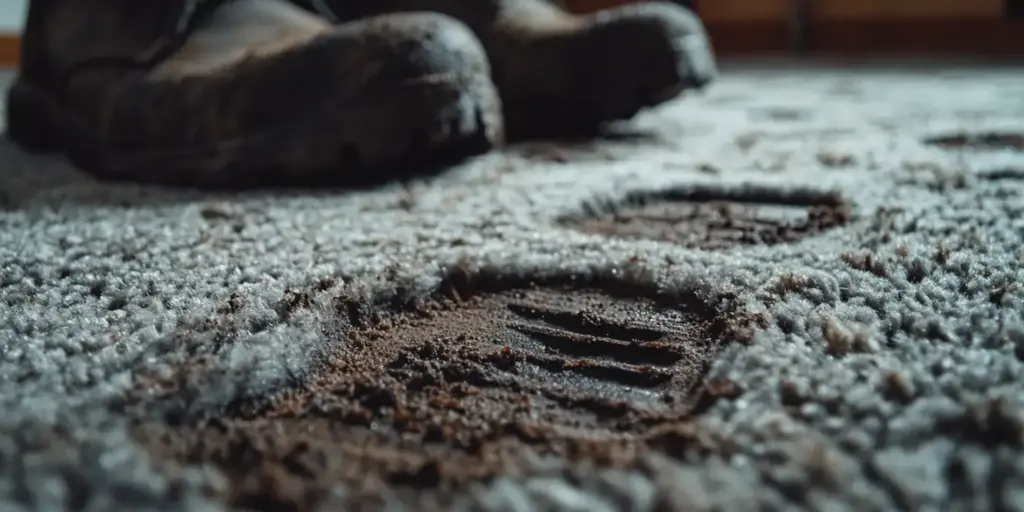
Many over-the-counter carpet cleaners leave behind sticky residues. These residues attract dirt and grime long after the initial cleaning. This is especially true when the cleaning solution isn’t fully rinsed out.
Over time, even a thoroughly cleaned carpet can look stained again because the residue pulls dirt from foot traffic back into the fibers.
Pet Accidents
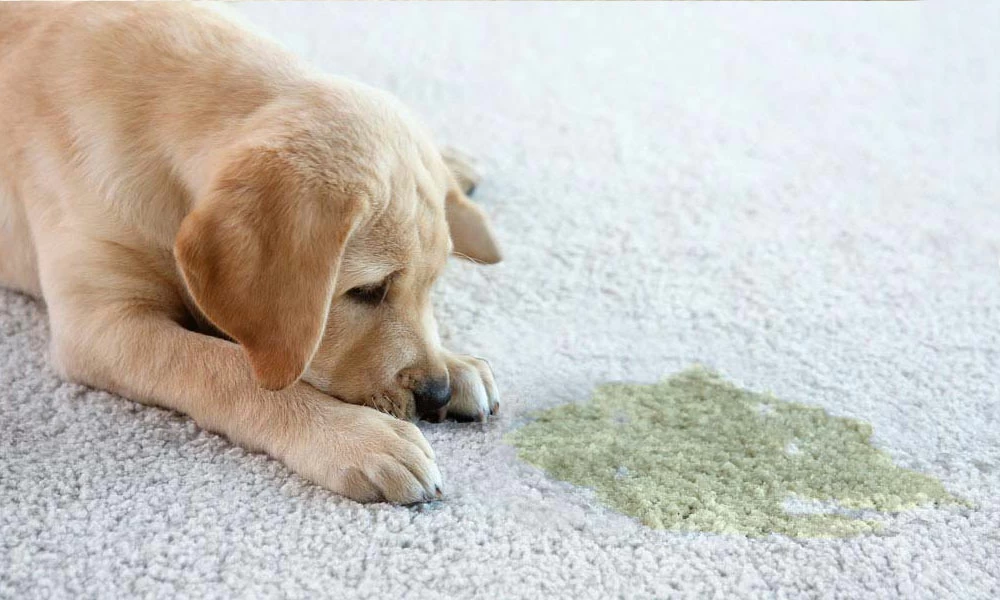
Pet urine contains proteins, ammonia, and urea that are particularly difficult to clean. These substances can penetrate deep into the carpet pad and subfloor. If not cleaned properly, not only does the stain reappear, but the odor can linger as well.
DIY Cleaning Mistakes
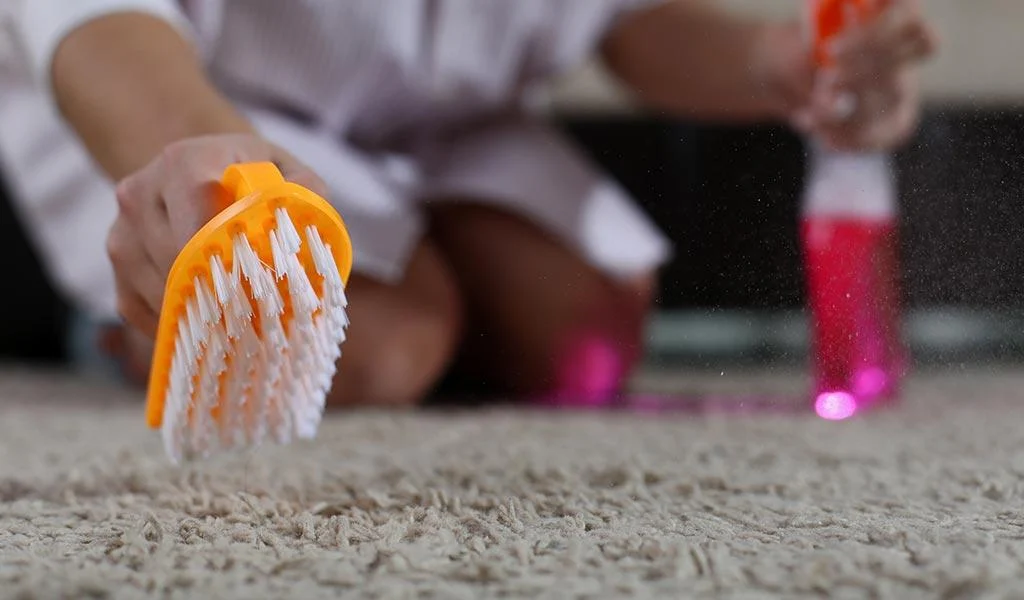
Using too much water, inadequate suction, or the wrong cleaning products can exacerbate the problem. Oversaturation can drive stains deeper, and ineffective cleaning agents may leave residues that act like magnets for dirt.
Related Topic: Carpet Ripples and Buckling: Causes, Solutions & Prevention
Mold and Mildew
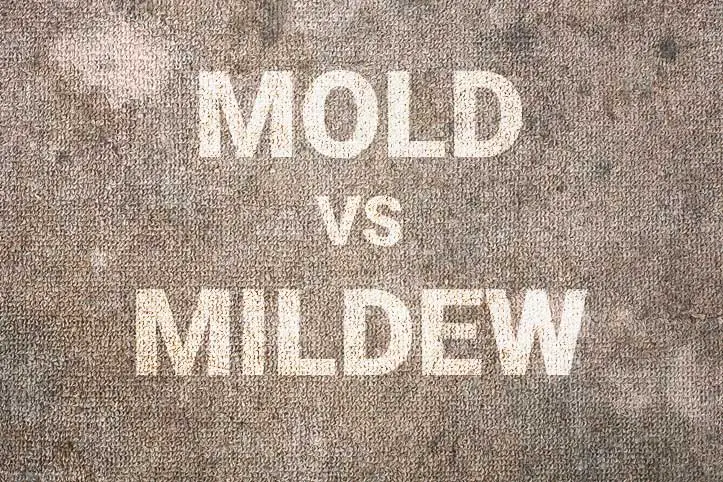
In moist or humid environments, carpets that aren’t dried properly can develop mold and mildew underneath. These microbial growths can create dark spots that keep coming back, and in some cases, they can contribute to health issues like allergies and respiratory problems.
Common Stains That Keep Coming Back
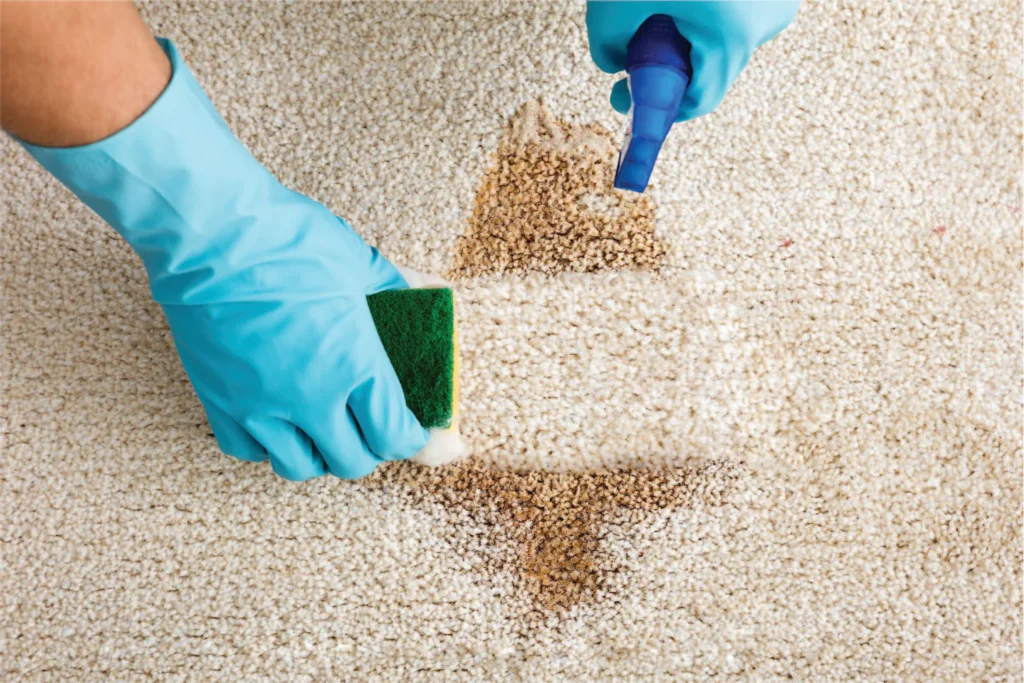
Certain types of stains are more likely to reappear due to their chemical makeup and how deeply they penetrate carpet fibers:
- Coffee and Tea: High in tannins that bond with carpet fibers.
- Red Wine: Pigmented and acidic, it seeps deep and is difficult to remove completely.
- Pet Urine: High in ammonia and organic materials.
- Grease and Oil: Adhesive and penetrative, hard to extract fully.
- Ink: Contains dyes that are tough to break down.
How to Treat Recurring Carpet Stains
Identify the Type of Stain
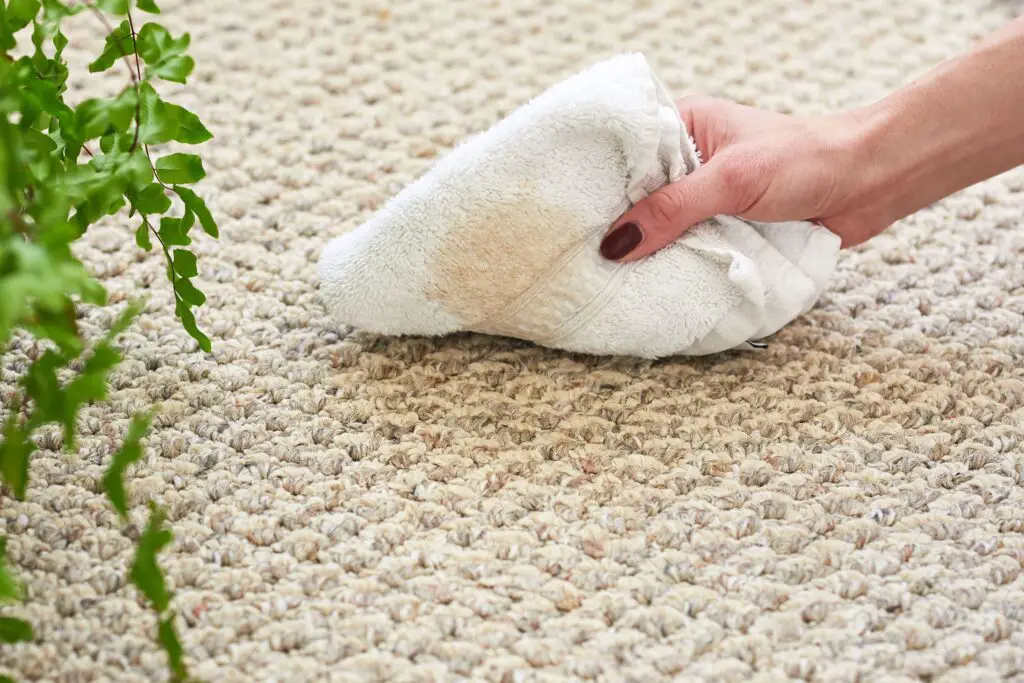
Before treating any stain, determine its origin. Different stains require different cleaning approaches. Organic stains (like food or urine) can be treated with enzyme-based cleaners, while dye stains might require oxidation or reduction agents.
Use the Right Cleaner
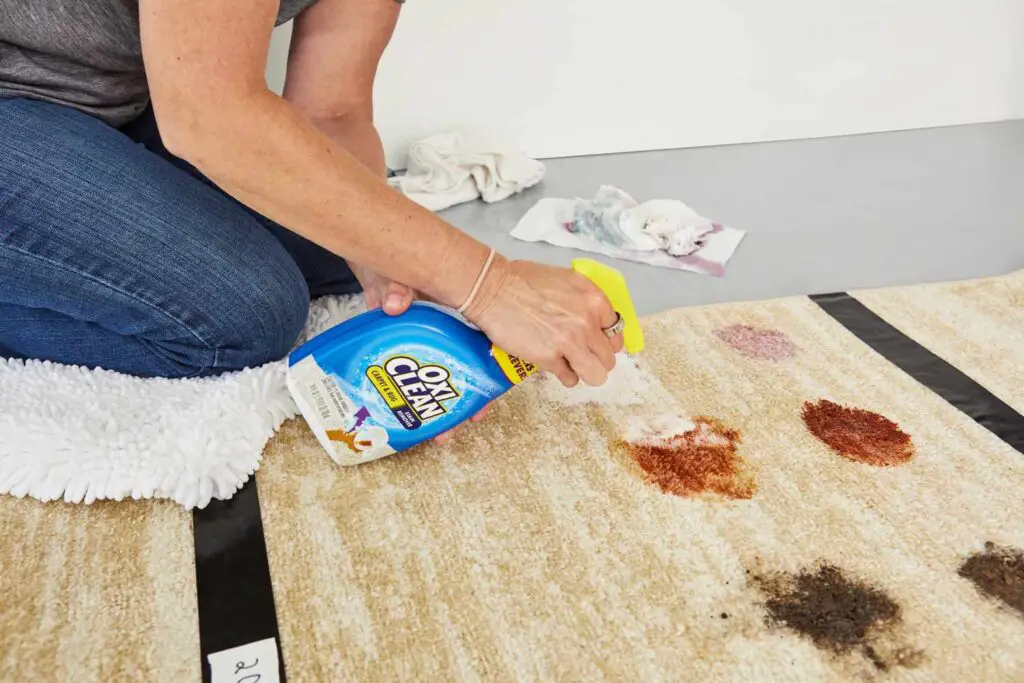
- Enzyme Cleaners: Ideal for organic stains like food, sweat, and pet urine. These cleaners break down proteins and eliminate odors.
- Oxygen Bleach: Effective for color-based stains like wine or coffee.
- Solvent-Based Cleaners: Work well on grease, oil, and makeup.
Always spot-test cleaners on an inconspicuous area first to ensure they won’t discolor your carpet.
Related Topic: How to Get Wrinkles Out of Carpet Without a Stretcher: A Complete DIY Guide
Hot Water Extraction (Steam Cleaning)
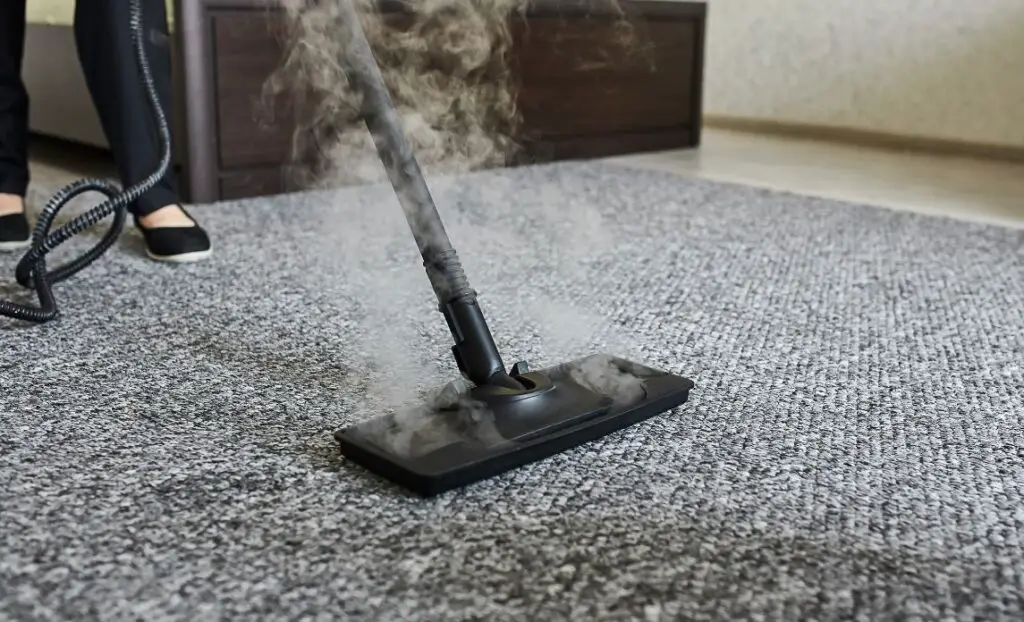
Hot water extraction is one of the most effective ways to remove deeply embedded stains and residues. It works by injecting hot water and detergent into the carpet and then immediately vacuuming it out. This method is best performed by professionals, but high-quality DIY machines are available for home use.
You can learn more about the benefits of professional cleaning here: Hire a Professional Carpet Cleaner.
Rinse and Dry Thoroughly
After cleaning, ensure the carpet is thoroughly rinsed to remove any cleaner residues. Use fans, open windows, or dehumidifiers to speed up drying. Avoid walking on the carpet until it’s fully dry to prevent re-soiling.
Replace Padding if Necessary
If a stain keeps returning despite multiple cleanings, the problem may lie in the carpet padding or even the subfloor. In such cases, consider lifting the carpet and replacing the affected padding.
Related Topic: Carpet Water Damage: Causes, Prevention & Restoration Guide
Prevention Tips: How to Stop Stains From Coming Back
Act Fast
The sooner you address a spill, the less likely it is to soak deep into the carpet and padding. Keep a carpet cleaning spray or spot treatment solution handy.
Use Carpet Protector Treatments
Products like Scotchgard can create a barrier around carpet fibers, making it more difficult for liquids and oils to penetrate. Apply protectants every 6-12 months depending on traffic and usage.
Regular Deep Cleaning
Schedule a professional deep clean at least once a year, or more often if you have children or pets. Check out our guide on How Carpet Cleaners Work for more details.
Proper Drying
After any cleaning, use fans or dehumidifiers to ensure complete drying. Damp carpets are a breeding ground for mold and can cause previously removed stains to reappear.
High-Quality Doormats
Place doormats at entrances and remove shoes before walking on the carpet. This reduces the amount of dirt and oils transferred from feet.
Related Topic: How Carpet Cleaners Work: The Complete Guide for Homeowners
Professional Services vs. DIY
While many stains can be handled at home, persistent or recurring stains often require professional intervention. Professionals use:
- Industrial-grade steam cleaners
- Specialized stain removal agents
- Tools to lift the carpet and replace padding
To explore professional services in your area, visit our page: Professional Carpet Repair Services.
FAQs
How do I know if the stain is in the padding?
If a stain keeps reappearing in the same spot despite surface cleaning, it’s likely that the contamination has reached the padding or subfloor.
Are store-bought carpet cleaners effective?
They can work for surface-level stains but often leave residues. For deep or dye-based stains, professional-grade products are more reliable.
Can vinegar and baking soda remove recurring stains?
They can help lift light organic stains, but they’re generally not effective on deep or dye-based stains.
How long does it take for a cleaned carpet to dry?
Typically 6-12 hours, but it can take longer depending on ventilation and humidity. Always ensure complete drying to prevent re-staining or mold growth.
What are signs of mold under the carpet?
Persistent musty odors, dark spots that grow over time, and allergy-like symptoms can indicate mold or mildew underneath your carpet.
Final Thoughts
Recurring carpet stains are more than just an aesthetic issue; they can indicate deeper problems like contaminated padding, residue buildup, or even mold growth. Understanding the science behind stains and using targeted solutions can help eliminate them for good. Combine proper cleaning techniques with preventive habits to keep your carpet looking spotless year-round.
For more guides on carpet maintenance, check out our full blog library: Carpet Majesty Blog.
Need help with stubborn stains? Learn more about our Professional Carpet Cleaning Services today.

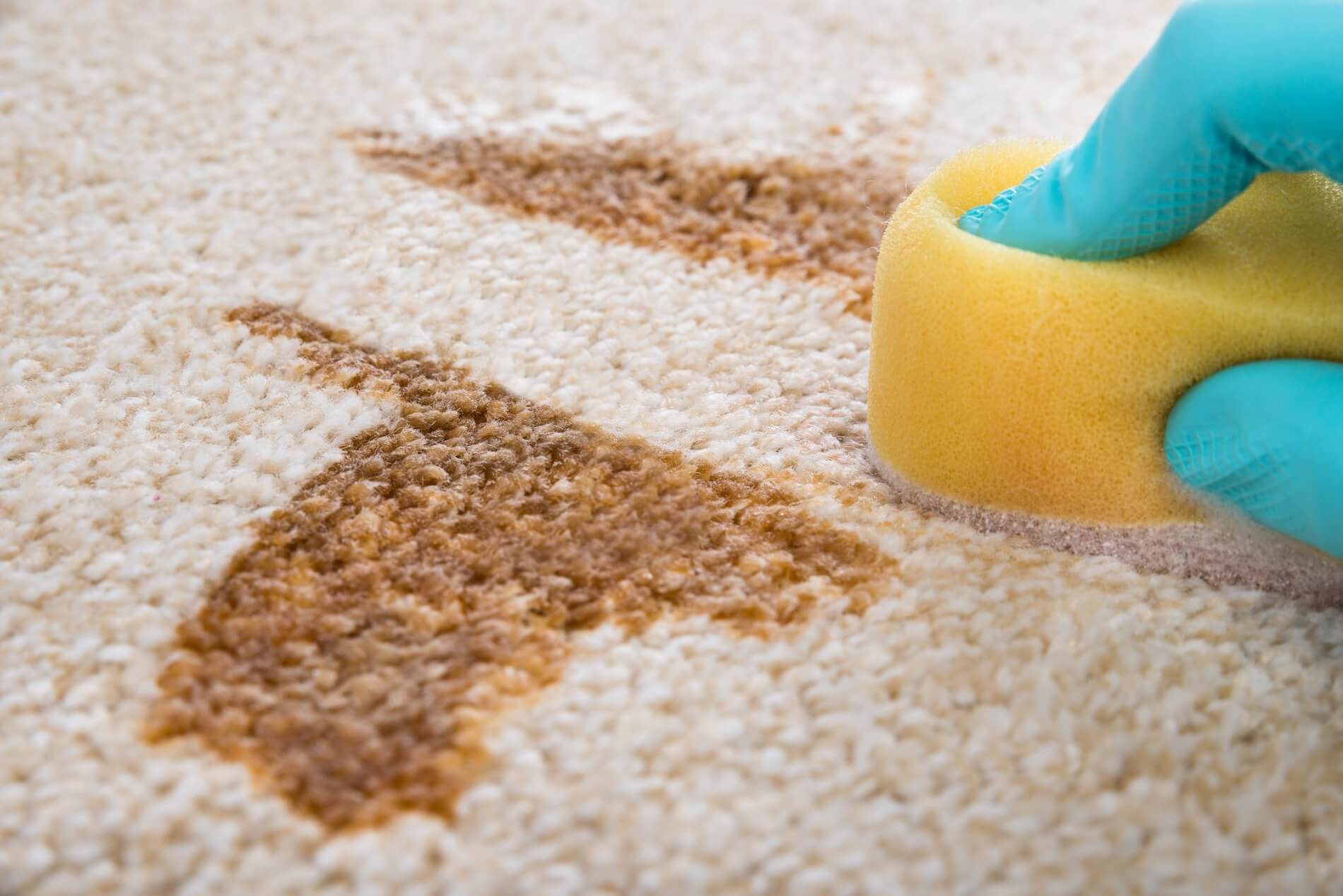
1 thought on “Carpet Stains That Keep Coming Back: Deep Cleaning & Prevention”